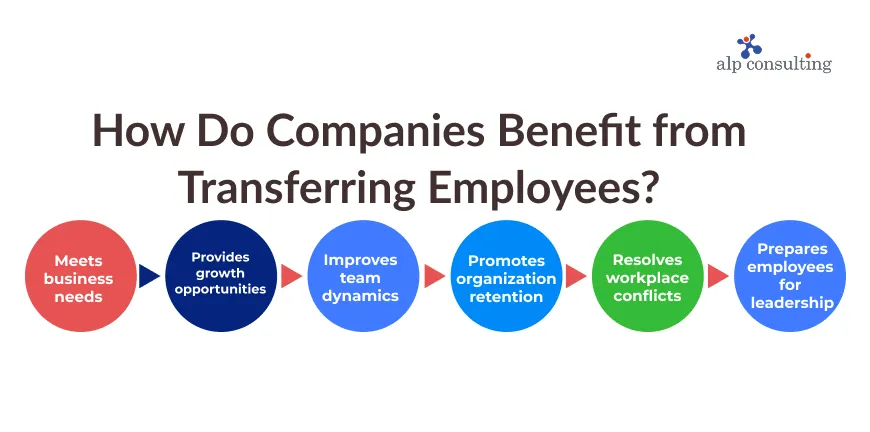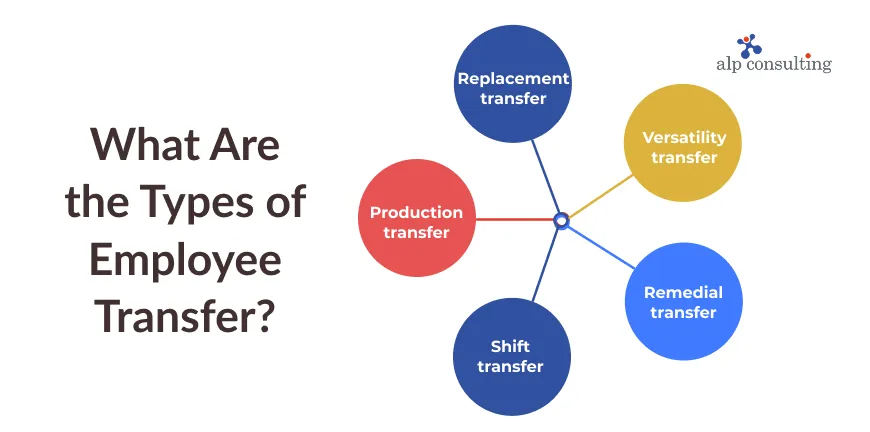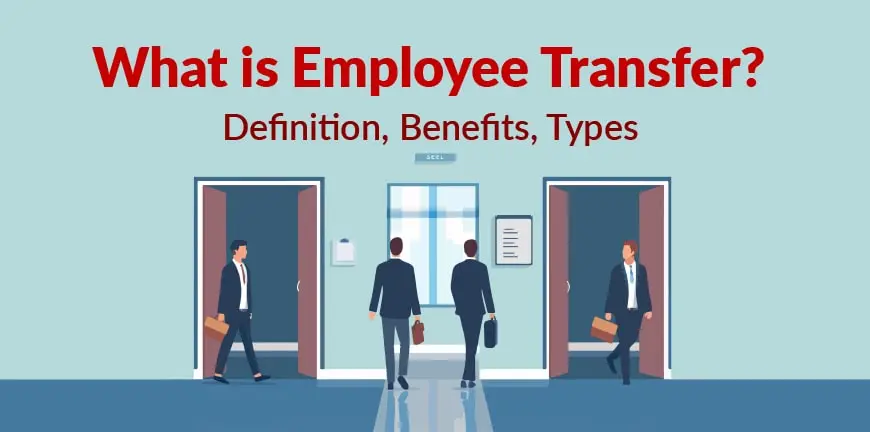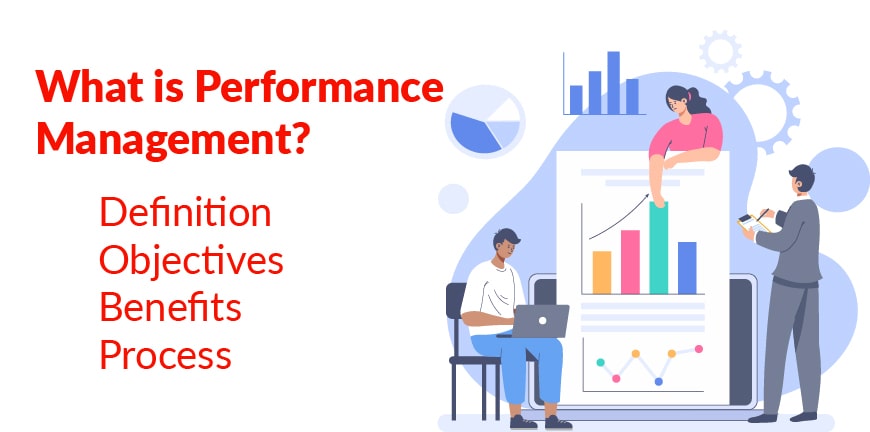
Key Compliance Checklist for Employers Using Contract Staff
09/12/2025
What are the Functions of Staffing? – Definition, Importance, Advantages
10/12/2025- What Is an Employee Transfer?
- What Is the Process of Employee Transfer in HRM?
- What are the Reasons for Employee Transfer?
- What should an Employee Transfer Policy Include?
- How Do Companies Benefit from Transferring Employees?
- What Are the Types of Employee Transfer?
- You Need a Workforce Management Partner
- FAQs
As an employer, you want your best employee to take the wheel when you are stuck in a storm. Sometimes you want to move an employee from manning the sails to cleaning the decks because you think this is a more apt use of their time. An employee transfer can positively or negatively impact your business, so care must be taken before you jump the
Moving an employee from one city to another or from one department to another need not be an act of lack of belief on the part of the employer. Such a transfer could be initiated by the employee itself. Let us now define what we mean by an employee transfer.
Companies worldwide are now realizing the merits of employee transfer and avoiding layoffs as much as possible except when constrained by business goals. In this article, we will look at how we define employee transfer, how important it can be to the organization and how it is almost always better than a layoff, and why you need an employee transfer policy.
What Is an Employee Transfer?
Employee transfer is the process of transferring an employee from one department to another in a company either in the same location or in a different location. An alternative term for employee transfer is internal mobility. These transfers can be temporary or permanent and are generally initiated by the employer.
What Is the Process of Employee Transfer in HRM?
The employee transfer process in HRM involves several steps that ensure both the organization and the employee transition go smoothly. The general flow includes:
Understanding the need for transfer: Organizations often decide to transfer an employee if there is an open role that needs to be filled immediately, if they are coming up with a new branch, or if they want to make sure all locations or departments have a workforce that needs no more addition.
The transfer Request is initiated: Employee transfers can be requested by management, HR, or employees themselves, depending on the situation. For employees it may be because of personal reasons and for businesses, to ensure better productivity.
Evaluating Eligibility: HR conducts a full assessment of the employee up for transfer and see if they meet the required qualifications for the new role or location, considering skills, tenure, and performance.
Gaining Approvals: The current manager, future manager, HR, finance departments, and everyone that is responsible for the employee in one or the other way must give their approval for transfer as well as salary adjustments.
Formal Communication: The employee is informed about the transfer through an official transfer letter or that outlines new responsibilities, compensation (if changed), and other relevant data.
Payroll and Administrative Updates: The HR team coordinates with the payroll team to make sure the changes made in the compensation or benefits is updated in the system.
Onboarding to the New Role: Depending on the transfer type, the employee may undergo brief orientation, training, or mentorship in the new role.
What are the Reasons for Employee Transfer?
There are several reasons why an employee could be up for transfer. Some of the reasons are-
- If a company is expanding, cutting down on employees, or making changes to its current organizational structure.
- To make sure that an employee’s skills are put to best use by placing them in the right roles.
- Interpersonal conflict resolutions or manager-employee issues, or tension between teammates can lead to employee transfers.
- Reduce monotony and increase chances of employees learning other skills and work for different departments.
- If an employee wants the transfer due to family reasons like shifting from one state to the other or health conditions or housing needs.
- When employees have the skills and are looking to explore different opportunities for roles as part of their career growth.
What should an Employee Transfer Policy Include?
Some of the key points to include in an employee transfer policy are-
- Who are eligible for transfer based on their tenure, how they have performed so far etc.
- How an employee’s performance will be assessed if they are up for a transfer. This assessment could include their past performance, skills etc
- There must be a defined process for the transfer to take place. Application forms, formal transfer request and a discussion with the HR department would suffice.
- Define who will approve the transfer, whether its the HR, current manager and receiving manager.
- Notice period before the transfer becomes effective.
- Make sure the employee transferred are given a clear brief about their new role, responsibilities and expectations.
- If you have made changes to compensation, benefits or allowances, mention it clearly.
- The policy must be reviewed periodically to make sure they satisfy legal compliance requirements and are good for achieving organizational goals.
How Do Companies Benefit from Transferring Employees?
That brings us to the next question: how does an employee transfer policy benefit employers? It benefits employers because they can plan things better and meet immediate targets. Let us look at the benefits of transferring employees.

1. Meets business needs
Transfers can help the business not only fill the roles with the right people and skills but also ensure that they meet their targets, thanks to that.
2. Provides growth opportunities
When a transfer is an alternative to a layoff, it means that the company can retain the individual and give them growth opportunities. This also improves employee engagement.
3. Improves team dynamics
Transfers can bring fresh perspectives to a team that has had the same people for a very long time. This could lead to innovation and increased productivity.
4. Promotes diversity and inclusion
Transfers also help promote diversity and inclusion within the company and a healthy work culture everyone can relate to.
5. Resolves workplace conflicts
Transfers can give employees who have faced conflicts or workplace stress a fresh start, and this could help the company not lose precious talent.
6. Prepares employees for leadership
Employee transfers could promote leadership ideas too, ensuring that the employee gets educated about inclusion, respecting others’ ideas, and strategizing with new people.
What Are the Types of Employee Transfer?
The employee transfer can be classified into different types to serve different needs, beginning with replacement, moving to versatility and shift transfer, and ending with production transfer. The way the transfer happens will be determined by the employee transfer policy.

1. Replacement transfer
An employee moves into a new role filling a vacancy or assists another employee and reduces their work.
2. Versatility transfer
A temporary or possibly even permanent transfer in which an employee moves into a new role to pick up desirable skills.
3. Remedial transfer
An employee is transferred to fill a role, either helping or replacing a poor hire or someone with difficulty.
4. Shift transfer
An employee gets transferred to a new shift, either temporarily or permanently, generally with the same work responsibilities
5. Production transfer
An employee gets transferred to a different branch or department, usually with the same responsibilities. This is done to prevent layoffs.
You Need a Workforce Management Partner
Employee transfer is just one aspect of workforce management. There are so many other things that make workforce management a necessary part of your business planning as an enterprise. Alp Consulting, with over 25 years of experience in recruitment and staffing, should be your workforce management partner of choice. Let us help you navigate workforce management in a way that makes your HR’s job easier. Talk to us today.
FAQs
1. What is the process of employee transfer in India?
In India, the process of transfer employees includes appointment letters, certified standing orders, and company policies.
2. What are the rules for employee transfer under Indian labour law?
Employee transfers in India are governed by company policies, but labour laws like the Industrial Disputes Act, 1947, offer some protection. The law requires that an employer cannot transfer an employee without reasonable cause. It also ensures that transfers do not lead to unfair dismissal.
3. Can an employee refuse a transfer?
Yes, employee can sometime refuse to get transferred to another profile provided it was informed to him prior regarding transfer on certain conditions. But it can ,lead to insubordination and dismissal, unless valid grounds exist. Employers have a broad right to transfer employees.
4. What is the difference between a transfer and a layoff?
An employee transfer is one where the employee is moved to another location or department within the organization whereas in layoff, the employee is terminated either temporarily or permanently.
5. Who drafts the employee transfer policy?
The employee transfer policy is drafted by the HR in consultation with the senior management and includes the duration of transfer and the date it is effective from, details like where the transfer is being made to and what the new role and remuneration would be.
6. Why do you need an employee transfer policy?
An employee transfer policy helps prevent any ambiguities in the employee transfer process. The transferred employee and the employer have clarity on what to include in the transfer documentation and how exactly to affect the change.
7. How to transfer employees in HRMS?
To transfer employees in an HRMS, log in, find the “Transfers” or similar module, and follow the specific workflow for your system, which usually involves initiating a new transfer request, filling out employee and transfer details, getting necessary approvals, and uploading supporting documents like the official order and relieving/joining letters.
Contact Us For Business Enquiry

Rajkumar Shanmugam
Rajkumar Shanmugam is the Head of HR at ALP Consulting, bringing over 19 years of comprehensive HR leadership experience across India and international markets. His expertise spans talent acquisition, employee relations, performance management, compliance, and HR transformation. Rajkumar has a proven track record of driving people-centric initiatives, enhancing workplace culture, and aligning HR strategy with business goals. With extensive experience in US staffing operations and global mobility, he continues to lead organizational excellence through innovation and employee engagement.




